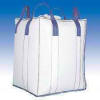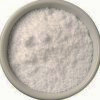| We are manufacturers of Lactic Acid FCC Food Grade USP BP Ph Eur, Pharmaceutical Excipients in India. We offer Halal and Kosher Lactic Acid FCC Food Grade USP BP Ph Eur made in an ISO9001, ISO22000 (FSSC22000) cGMP and GLP certified facility. |
Lactic Acid SDS GHS of Manufacturers
CAS Number: 50-21-5, Molecular Weight: 90.08, Chemical Formula: C3H6O3, EINECS EC Number: 200-018-0
Specifications Sheet of Lactic Acid Manufacturers
Lactic Acid SDS, Safety Data Sheet
MSDS, Material Safety Data Sheet
1. Product Identification
Product Name & Other Names: Lactic Acid or 2-Hydroxypropionic acid.
CAS No.: 50-21-5
EINECS EC Number: 200-018-0.
Molecular Weight: 90,08
Chemical Formula: C3H6O3
Relevant uses and uses advised against (if any): Industrial Manufacturing.
2. Hazards Identification
GHS, Globally Harmonized System Classification in accordance with 29 CFR 1910
Classification according to Regulation (EC) No 1272/2008
Skin corrosion/irritation Category (H315)
Serious eye damage/eye irritation Category 1 (H318)
Labeling according to GHS & Regulation (EC) No 1272/2008
GHS Label Elements  Corrosive |
Signal Words: Danger
Hazard Statements:
H315: Causes skin irritation.
H318: Causes serious eye damage.
Precautionary Statements:
P264: Wash … thoroughly after handling.
P280: Wear protective gloves/protective clothing/eye protection/face protection.
P360: Rinse immediately contaminated clothing and skin with plenty of water before removing clothes.
P362: Take off contaminated clothing and wash before reuse.
P302+352: IF ON SKIN: Wash with soap and water.
P332+313: If skin irritation occurs: Get medical advice/attention.
P305+351+338: IF IN EYES: Rinse cautiously with water for several minutes. Remove contact lenses if present and easy to do – continue rinsing.
P337+P313 If eye irritation persists: Get medical advice/ attention.
P314: Get Medical advice/attention if you feel unwell.
Classification according to EU Directives 67/548/EEC or 1999/45/EC:
Hazard Symbol:
C: Corrosive.
R-phrases:
R38 Irritating to skin.
R41 Risk of serious damage to eyes.
3. Composition/Information on Ingredients
Product Name & Other Names: Lactic Acid or 2-Hydroxypropionic acid.
CAS No.: 50-21-5
EINECS EC Number: 200-018-0.
4. First Aid Measures
Always seek medical advice after the first aid treatment.
Inhalation: Remove to fresh air. If not breathing, give artificial respiration. If breathing is difficult, give oxygen. Call a physician immediately.
Ingestion: DO NOT INDUCE VOMITING. Give large quantities of water. Never give anything by mouth to an unconscious person. Call a physician immediately.
Skin Contact: In case of contact with Lactic Acid, wipe off excess material from skin then immediately flush skin with plenty of water for at least 15 minutes. Remove contaminated clothing and shoes. Wash clothing before reuse. Call a physician immediately.
Eye Contact: Immediately flush eyes with gentle but large stream of water for at least 15 minutes, lifting lower and upper eyelids occasionally. Call a physician immediately.
5. Fire Fighting Measures
Fire: Not considered to be a fire hazard. It can burn at higher temperatures.
Explosion: Not considered to be an explosion hazard.
Fire Extinguishing Media: Use water spray, alcohol-resistant foam, dry chemical, or carbon dioxide. Use means suitable for extinguishing surrounding fire.
Special Information: In the event of a fire, wear full protective clothing and NIOSH-approved self-contained breathing apparatus with full face piece operated in the pressure demand or other positive pressure mode. At high temperatures under fire conditions, it may produce toxic or irritating fumes. Fire-extinguishing work is done from the windward and the suitable fire-extinguishing method according to the surrounding situation is used.
6. Accidental Release Measures
Personal precautions, protective equipment, and emergency procedures: Ventilate area of leak or spill. Avoid breathing dust/fumes/gas/mist/vapors/spray. Use individual protective equipment (waterproof boots, suitable protective clothing, safety glasses, etc.). Restrict unprotected personnel from the area.
Environmental precautions: Do not let the product enter drains, soil, or water sources.
Methods and materials used for containment Cleanup procedures and Storage: Contain spilled material. Cover with an inert, non-combustible absorbent material, (e.g. sand, earth, diatomaceous earth, vermiculite). Vacuum or sweep-up and remove to an approved disposal container.
7. Handling and Storage
Precautions for safe handling: Apply according to good manufacturing and industrial hygiene practices. Ensure proper ventilation. In case of insufficient ventilation, wear suitable respiratory equipment. Wash thoroughly after handling. Do not drink, eat, or smoke while handling. Avoid contact with skin, eyes, and clothing. Minimize dust generation. Avoid breathing dust/fumes/gas/mist/vapors/spray. Keep container tightly closed. Avoid ingestion and inhalation. Use individual protective equipment (waterproof boots, suitable protective clothing, safety glasses, etc.). Prevent any contact with hot surfaces.
Conditions for safe storage, including any incompatibilities: Store in cool, dry, and ventilated area away from heat sources and protected from sunlight in tightly closed original container. Keep air contact to a minimum. Store protected from heat, sparks and ignition sources and incompatible materials. Do not store with incompatible materials like strong oxidizing agents, strong reducing agents, strong bases, nitric, acid, iodides.
8. Exposure Controls/Personal Protection
Airborne Exposure Limits: This product does not contain any hazardous materials with occupational exposure limits established by the region specific regulatory bodies.
Ventilation System: A system of local and/or general exhaust is recommended to keep employee exposures below the Airborne Exposure Limits. Local exhaust ventilation is generally preferred because it can control the emissions of the contaminant at its source, preventing dispersion of it into the general work area.
Personal Respirators (NIOSH Approved): If the exposure limit is exceeded and engineering controls are not feasible, a full face piece particulate respirator (NIOSH type N100 filters) may be worn for up to 50 times the exposure limit or the maximum use concentration specified by the appropriate regulatory agency or respirator supplier, whichever is lowest. If oil particles (e.g. lubricants, cutting fluids. glycerin, etc.) are present, use a NIOSH type R or P filter. For emergencies or instances where the exposure levels are not known, use a full-face piece positive-pressure, air-supplied respirator.
Skin Protection: Wear impervious protective clothing, including boots, gloves, lab coat, apron or coveralls, as appropriate, to prevent skin contact.
Eye Protection: Use chemical safety goggles and/or full face shield where dusting or splashing of solutions is possible. Maintain eye wash fountain and quick-drench facilities in work area.
Other Control Measures: Maintain good housekeeping in work area.
9. Physical and Chemical Properties
Appearance: Lactic Acid viscous liquid.
Odor: Odorless.
Odor threshold: Not available.
pH: <1
Relative density: around 1.2
Boiling Point: 122C.
Melting Point - Freezing Point: 17-33C (1076F)
Flash point: No data found.
Auto-ignition temperature: No data found.
Decomposition temperature: No data found.
Upper/lower flammability or explosive limits: No data found.
Vapor pressure: No data found.
Vapor density: No data found.
Evaporation rate: No data found.
Flammability (solid, gas): No data found.
Partition coefficient: n-octanol/water: No data found.
Solubility: Soluble in water.
Viscosity: No data found.
10. Stability and Reactivity
Stability: Stable under ordinary conditions of use and storage.
Hazardous Decomposition Products: Carbon oxides.
Hazardous Polymerization: Will not occur.
Incompatibilities: Metals, strong oxidizing agents, strong reducing agents, strong bases, nitric, acid, iodides.
Conditions to Avoid: Excess heat, exposure to moist air or water and incompatibilities.
11. Toxicological Information
Oral, mouse: LD50 = 4875 mg/kg
Oral Rat LD50: 3543 mg/kg
Dermal Rabbit LD50: >2 g/kg
Carcinogenic Effects: Not a reported carcinogen by IARC, NTP, ACGIH, OSHA.
Epidemiology: No data found.
Teratogenicity: No data found.
Reproductive Effects: No data found.
Mutagenicity: Mutation in bacteria.
Neurotoxicity: No data found.
12. Ecological Information
Toxicity Data: No information found.
Environmental Fate: Lactic Acid is not expected to significantly bio accumulate.
Persistence and Degradability: Unlikely to persist due to water solubility.
Mobility: Likely to be mobile due to water solubility.
Results of PBT and vPvB assessment: This substance/mixture contains no components considered to be either persistent, bioaccumulative and toxic (PBT), or very persistent and very bioaccumulative (vPvB) at levels of 0.1% or higher.
13. Disposal Considerations
Although not a listed RCRA hazardous waste, Lactic Acid may exhibit one or more characteristics of a hazardous waste and require appropriate analysis to determine specific disposal requirements.
14. Transport Information
DOT USA, TDG Canada & ADR/RID Europe: Not regulated.
IMDG/IMO: Not regulated.
IATA/ICAO: Not regulated.
15. Regulatory Information
USA:
SARA 311/312: Acute Health Hazard. See section 2.
OSHA: Not applicable.
Section 16 - Additional Information
European Labeling in Accordance with EC Directives:
H315 = Causes skin irritation.
H318 = Causes serious eye damage.
Disclaimer:
**********************************
Our company provides this MSDS sheet in good faith but makes no representation as to its comprehensiveness or accuracy. This SDS sheet is intended only as a guide to the appropriate precautionary handling of the material by a properly trained person using this product. Individuals receiving the information must exercise their independent judgment and do further search in determining its appropriateness for a particular purpose. In no case shall our company be liable to loss or damages by the product user.
**********************************
Lactic Acid FCC Food Grade USP BP Ph Eur Manufacturers:
Anmol Chemicals
S-8, SARIFA MANSION, 2ND FLANK ROAD, CHINCHBUNDER, MUMBAI 400009, INDIA
TEL: (OFFICE) 91-22-23770100, 23726950, 23774610, 23723564. FAX: 91-22-23728264
e-mail: anmolc@mtnl.net.in
Copyright and Usual Disclaimer is Applicable. 17 February, 2022




